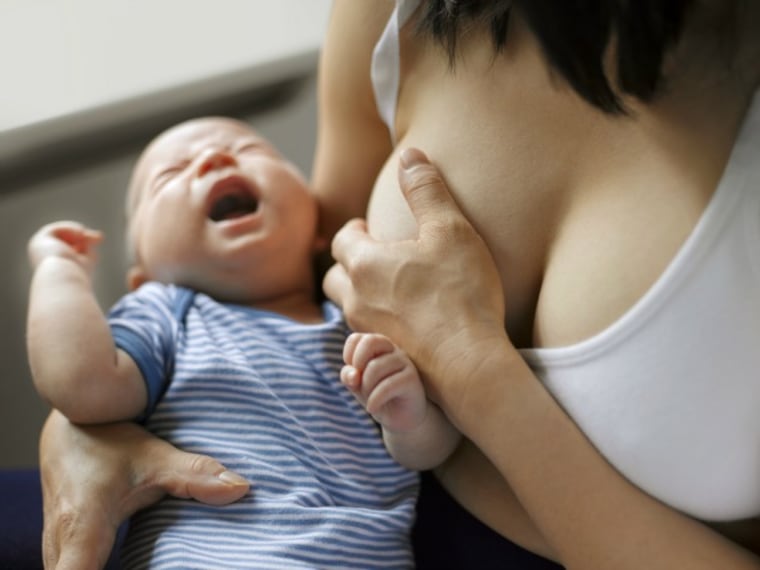As a new mama, you probably thought breastfeeding might be hard—and even painful at times. But lumps, a burning sensation and a fever? That might be the breast infection mastitis. Here's what you need to know about this common condition.
What is mastitis?
Mastitis is an inflammation of the breast tissue caused by an infection. It's typically seen in breastfeeding moms during the first 6 months, though it can occur with an older baby. It's tempting to quit breastfeeding—mastitis can be painful—but it's definitely worth it for you and your baby to stick it out.
What causes mastitis?
Mastitis stems from an infection caused by bacteria passed from your skin's surface or your infant's nose or mouth to the breast. The bacteria enter via a cracked or sore nipple and or through a milk duct opening. Mastitis is also caused by going for long periods of time without breastfeeding or not emptying the breast well at each feeding. The ducts can become clogged, causing milk to back up and become infected.
What are the symptoms of mastitis?
There are many symptoms of mastitis—and some may be mistaken for other illnesses. In most cases, mastitis only affects one breast, though it's possible to have it in both. Here, the most commons signs:
—Breast tenderness, swelling
—General malaise, feeling ill
—Soreness, redness
—A hard, red spot felt in the breast or a visible lump
—Burning sensation while nursing
—High fever (101F or more)
What do I need to know about mastitis and breastfeeding?
Mastitis is pretty common in breastfeeding moms, especially if their infants are under 3 months. At this early stage feedings may be short and irregular, so the breasts aren't emptied well or often enough. While mastitis can be painful, it's important to keep up the breastfeeding and nurse on the affected breast first. This keeps the milk flowing and helps to clear the infection (otherwise, the milk would continue to sit in the ducts, exposed to bacteria).
"Your baby isn't swallowing infected milk or pus—the milk is still nutritious!" explains Virginia Lupo, M.D., chair of obstetrics and gynecology at Hennepin County Medical Center in Minneapolis, MN. "In fact, moms with mastitis will feel worse if they don't breastfeed (or at least pump) because they'll have both the pain from mastitis and also engorgement."
What is the best treatment for mastitis?
Prescription antibiotics such as dicloxacillin, amoxicillin, erythromycin or ciprofloxacin are the go-to meds when it comes to treatment. You'll need to take the full course of medication (usually 10 to14 days worth), though you'll likely feel a lot better after a couple of days. Pain relievers like ibuprofen (Advil, Motrin) or acetaminophen (Tylenol) are fine to take as well while waiting for the stronger drug to kick in. Neither the antibiotics or the pain meds will harm your baby in any way. Rarely, this infection can worsen and turn into an abscess that needs to be drained by a physician.
While feeding from the affected breast is recommended (see above), if it's too painful, start on the other side to get the milk flowing and then switch. If your nipple is too sore, or the pain is intense, pump the affected breast instead. Get as much rest as you can and consider these other ways to ease mastitis:
—Drink extra fluids and use a heating pad on the affected breast
—Avoid waiting too long between feedings (you may become engorged)
—Change positions when nursing so the breast is drained in a variety of ways
—Wear a supportive bra
Can mastitis be prevented?
Consider scheduling an appointment with a lactation consultant to avoid a future case of mastitis. A lactation consultant will assess your breastfeeding style -- from the way you hold your baby and your latch-on to the number of times you nurse and the duration of each session. Other ways to reduce the chance of mastitis include: allowing your baby to completely drain one breast before switching sides, alternating the breast you offer first at each feeding and changing the positions from one session to the next (cradle, cross-cradle, football, side-lying).
A version of this story originally appeared on iVillage.
